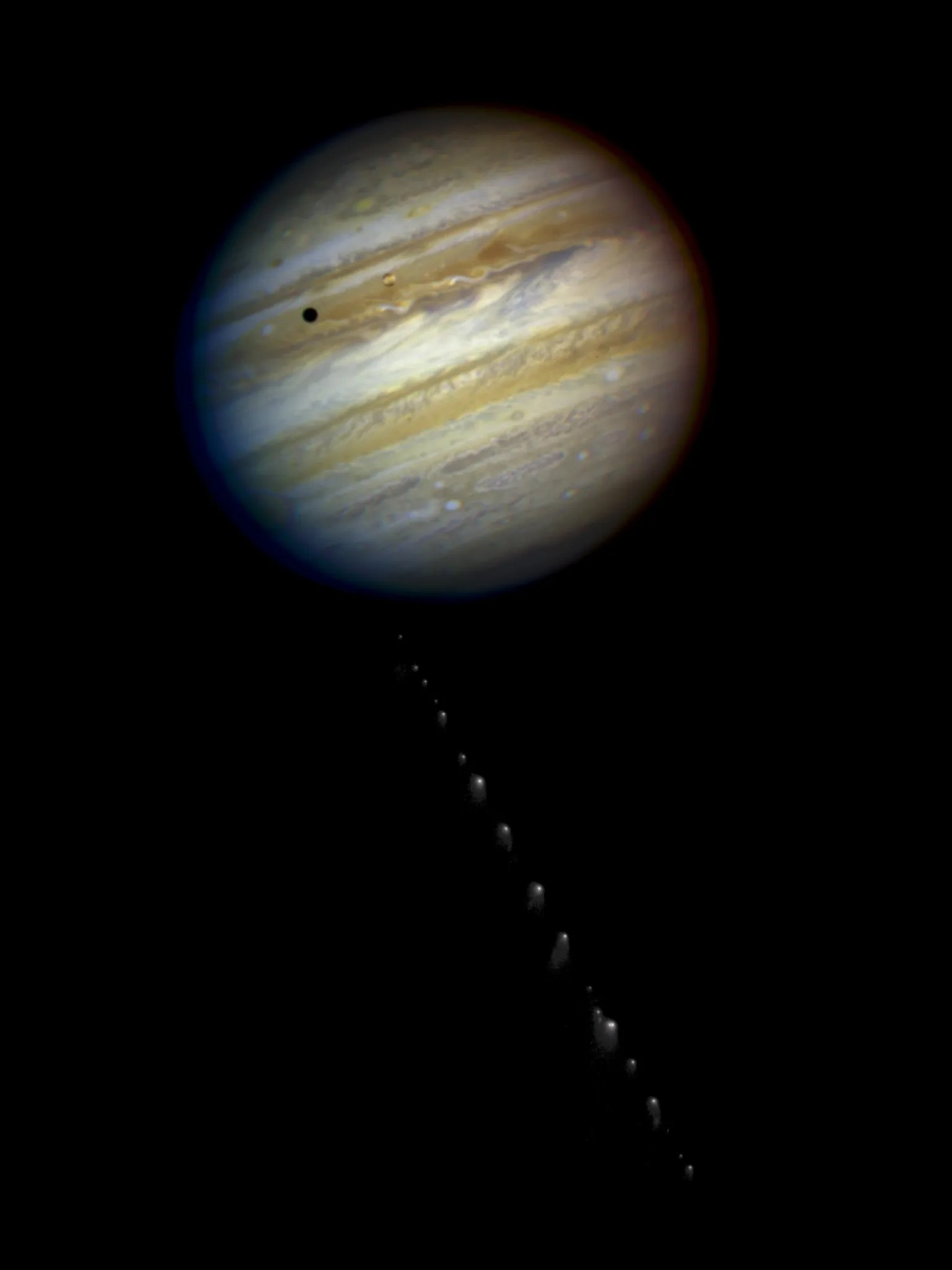This is a composite photo, assembled from separate images of Jupiter and comet Shoemaker-Levy 9, as imaged by the NASA/ESA Hubble Space Telescope in 1994.
Comet Shoemaker-Levy 9 was discovered by astronomers Carolyn and Eugene M. Shoemaker and David Levy on March 24, 1993. It was the first comet observed to be orbiting a planet - in this case, Jupiter - rather than the sun. The effect of Jupiter's tidal forces had already torn the celestial body apart and, eventually, the fragments collided with Jupiter between July 16 and 22, 1994.
The image of the comet, showing 21 fragments, was taken on May 17, 1994. The image of Jupiter was taken on May 18, 1994. The dark spot on the planet is the shadow of the inner moon lo. The apparent angular size of Jupiter relative to the comet, and its angular separation from the comet when the images were taken, have been modified for illustration purposes.
Herschel is a European Space Agency mission, with science instruments provided by consortia of European institutes and with important participation by NASA. NASA's Herschel Project Office is based at NASA's Jet Propulsion Laboratory, Pasadena, Calif. JPL contributed mission-enabling technology for two of Herschel's three science instruments. The NASA Herschel Science Center, part of the Infrared Processing and Analysis Center at the California Institute of Technology in Pasadena, supports the United States astronomical community. Caltech manages JPL for NASA.
Credit: NASA, ESA, H. Weaver and E. Smith (STScI) and J. Trauger and R. Evans (NASA's Jet Propulsion Laboratory)


































